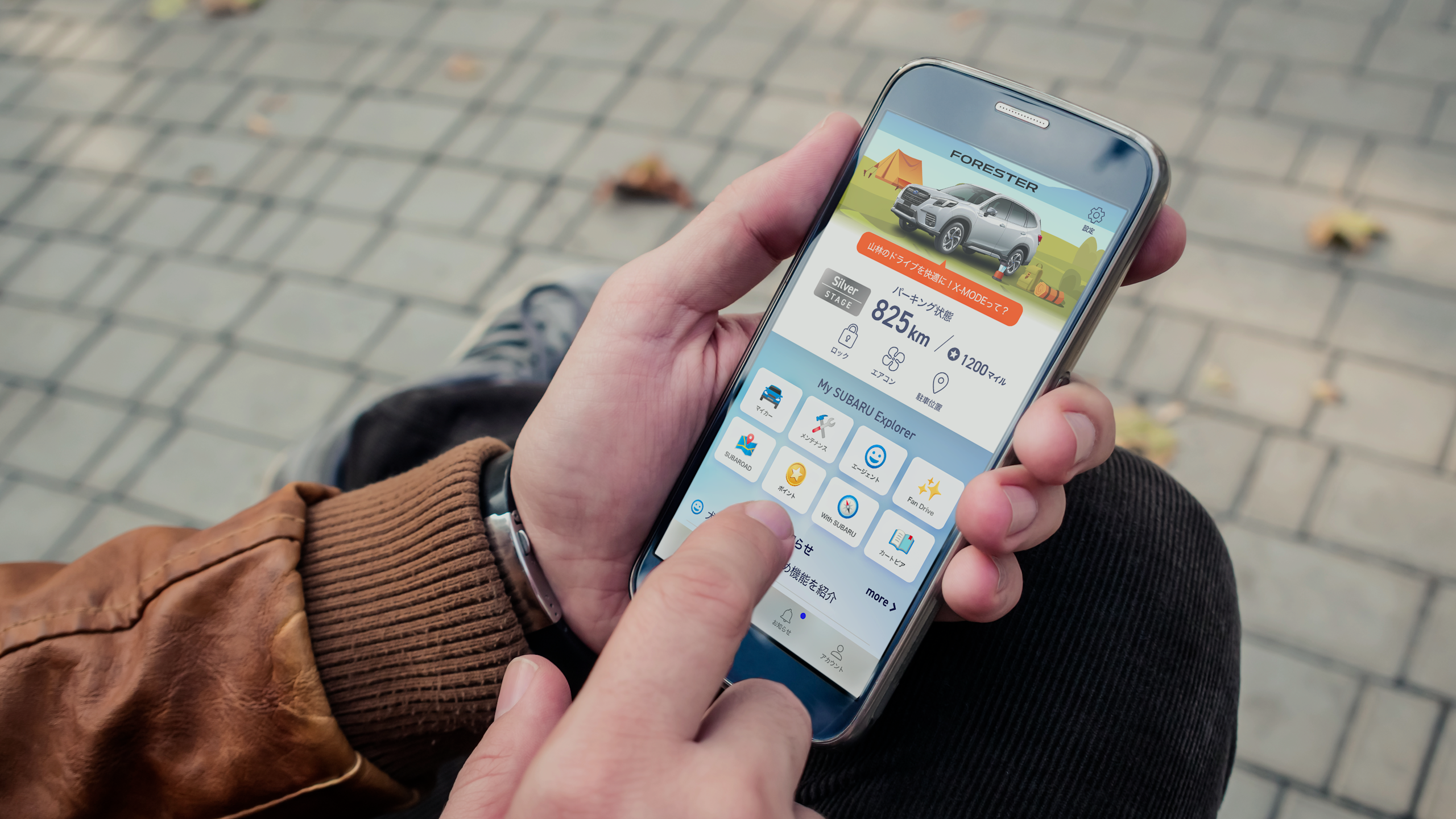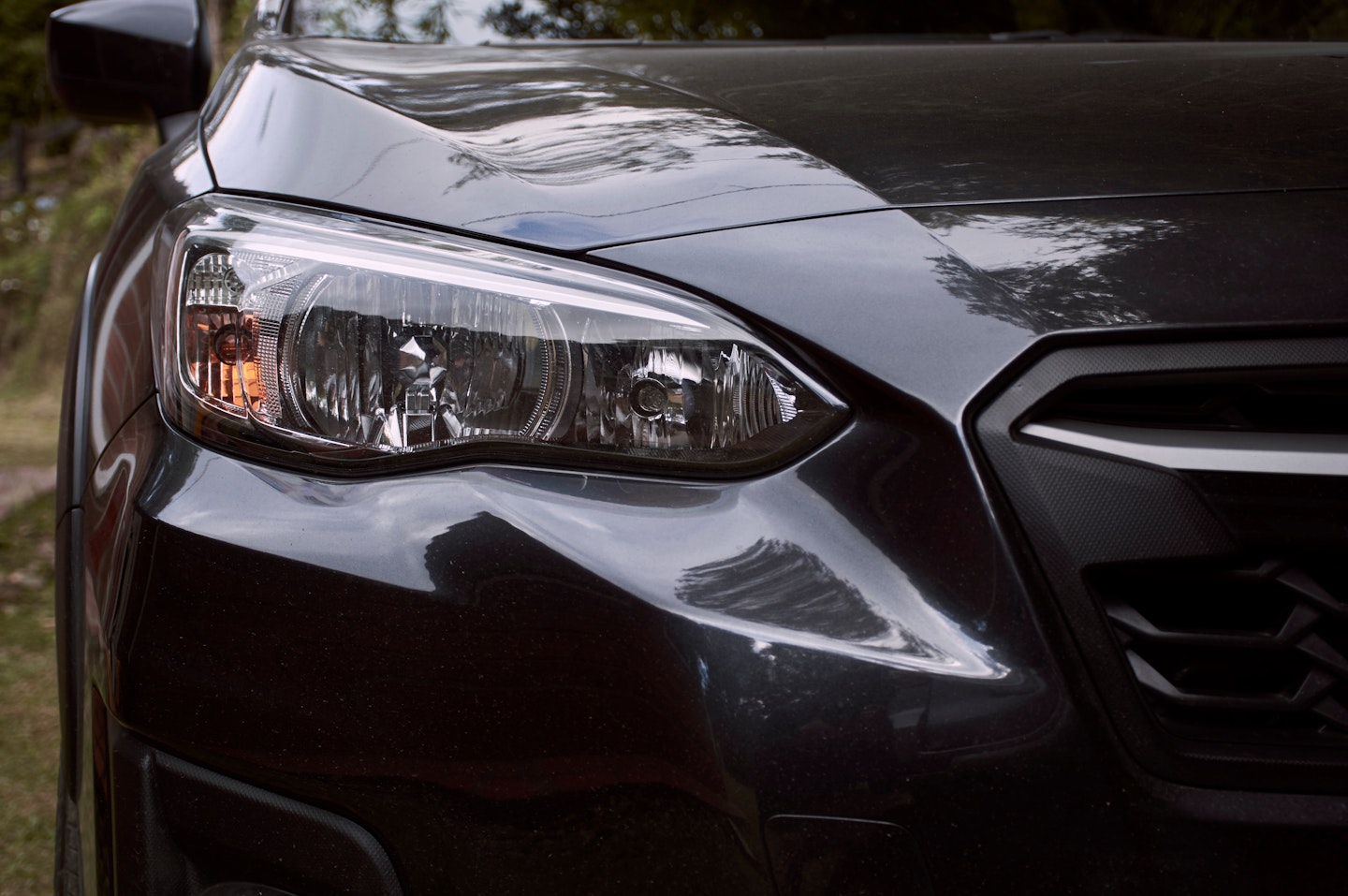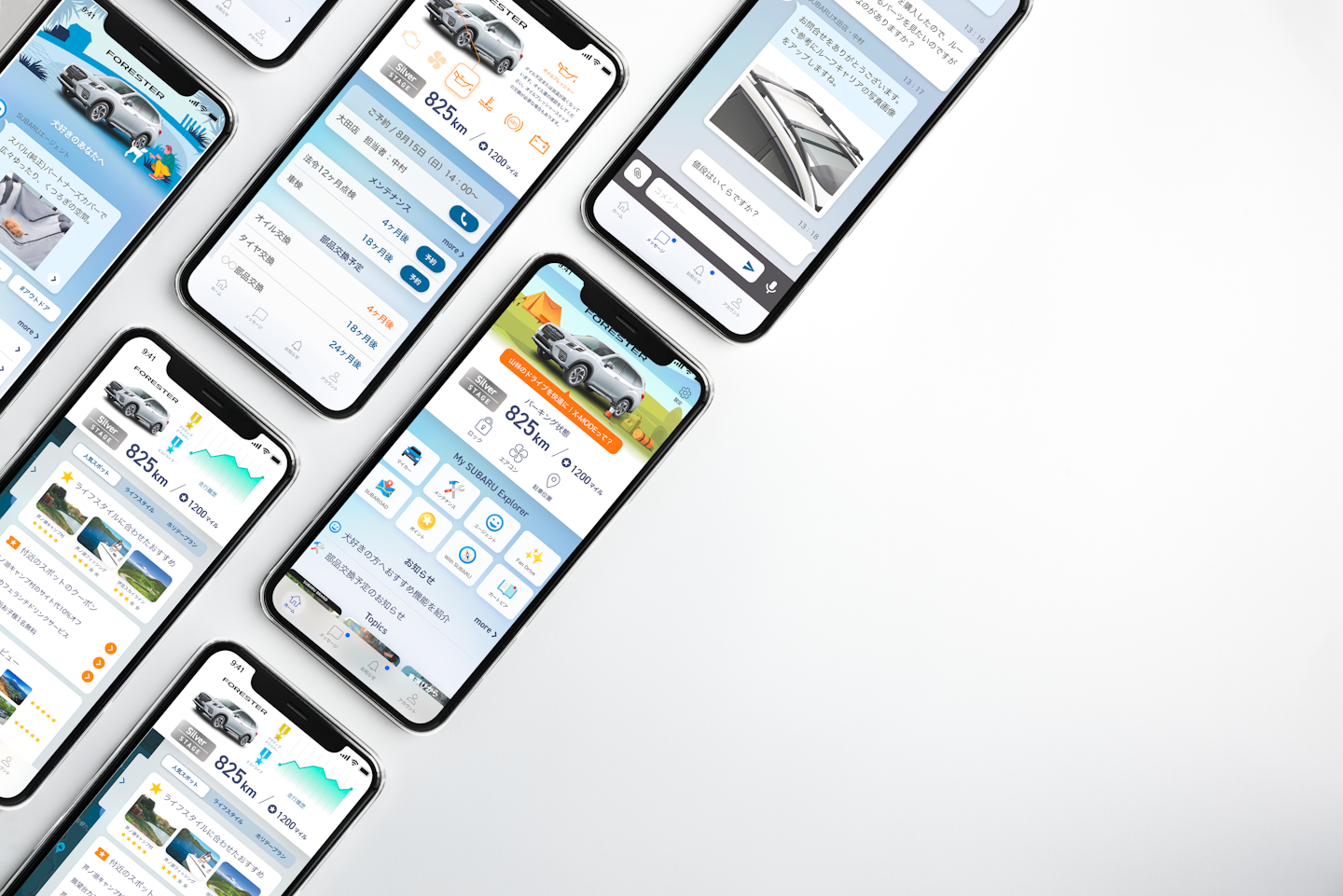Redefining the experience of the Subaru vehicle owners’ platform to maintain and boost brand loyalty.
- Team
- Tangity
- Subaru
- Studios
- Tokyo
- Duration
- 5 months

Subaru is the automobile manufacturing division of the Japanese transportation conglomerate Subaru Corporation. In a 70-year long history, Subaru has constantly been pursuing the vision of ‘delivering happiness to all’. Today, Tangity and Subaru have tried to update the “happiness” according to the rapid changes of the time. Defining a new concept for the MySubaru app with improved experience on the main selected customer journeys was to drive loyalty in Subaru vehicles owners and push repeated purchases. Our challenge was to spot the potential desire of what a Subaru owner expected to find on such platform.

We looked for issues and developed solutions from the owner‘s perspective and visualized our ideas through mock-ups. To achieve this process, we adopted what we call an “immersive design approach”. First, by sharing both domestic and international case studies that have improved customer loyalty to raise awareness during workshops. Second, we set the Subaru owner as a persona and drew a user journey map based on the more realistic assumption. Finally, by empathizing with the persona's actions from the perspective of the person concerned, the "trouble" was noticed through the user scenario and the solution was made into a story as a mock-up.

The design research process used as auxiliary items for the workshop's ideation were diverse, convincing and stimulating. After defining the main Subaru owner persona and a user scenario by specifically verbalizing the usual actions, feelings at the time, and troubles from the perspective of the person concerned, we realized and delivered a prototype of the new MySubaru app. By testing the concept from 3 standpoints (user, business viability and technical feasibility), it was possible to prioritize functions and better direct implementation. The visualization in the form of mock-ups enabled us to share and resonate with stakeholders.
Hungry for more?